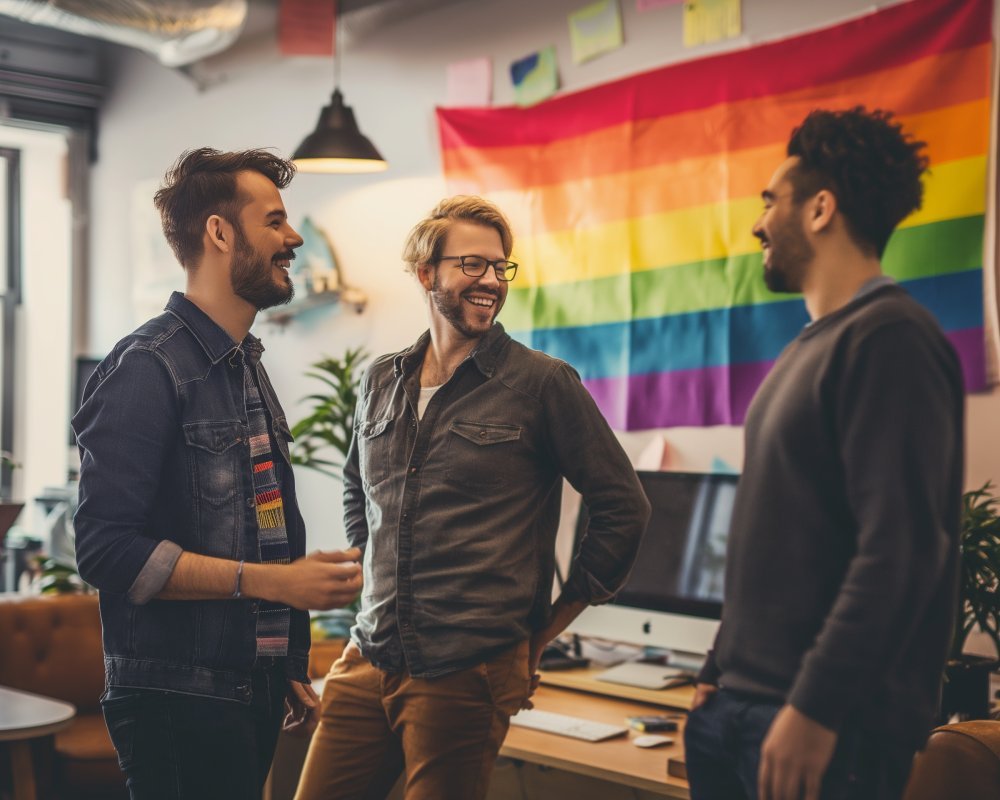
Where Are the Gay-Friendly Cities? A Comprehensive Guide to the World’s Most LGBTQ-Inclusive Destinations
1. Introduction – Where Are the Gay-Friendly Cities?
When travelers or those considering relocation ask, “Where Are the Gay-Friendly Cities?” they’re really looking for places that offer open-minded communities, robust LGBTQ+ protections, and vibrant social scenes. Whether you’re exploring for the weekend, seeking a supportive place to call home, or gathering information for advocacy, understanding which locales are welcoming to lesbian, gay, bisexual, transgender, queer, intersex, asexual, and other sexual and gender minority communities is invaluable.
Over the past few decades, social progress in many parts of the world has led to new enclaves of inclusive culture. Along with historical destinations like San Francisco in the United States or Amsterdam in the Netherlands, countless other cities—both large metropolitan areas and smaller towns—are stepping up with forward-thinking policies, inclusive events, and thriving queer communities. From the enormous Pride parades of New York and Madrid to the intimate coffee-shop gatherings in small-town Massachusetts, LGBTQ-friendly areas are more accessible than ever.
The expansion of digital information and social media has also made it easier to connect with like-minded individuals and local organizations before you even arrive. In turn, this connectivity fosters an environment where travelers can feel safe and plugged into existing networks as soon as they touch down. Of course, each traveler’s needs will differ: a transgender professional might value robust healthcare options, while a lesbian couple might prize a city’s walkability and vibrant community centers. Similarly, retired seniors might appreciate affordable living costs, while digital nomads might focus on coworking spaces and nightlife.
This blog is designed to explore everything from the 15 most LGBTQ-friendly cities in the U.S. to the 16 most LGBTIQ+-friendly cities in the world, along with a special spotlight on 9 queer-friendly American small towns you should visit. We’ll also tackle frequently asked questions like “Where Are The Lesbian-Friendly Cities?” and “Where Are The Transgender-Friendly Cities?” and provide a broad scope of the world’s LGBTQ enclaves, from bustling capitals to quaint hamlets.
Furthermore, you’ll find comparisons based on local laws, cultural acceptance, cost of living, and general quality of life. This expansive guide will help you weigh factors such as safety, employment opportunities, and the presence of advocacy groups or Pride events. By the end, you should have a clearer perspective on not only where to travel or move but also how these LGBTQ-friendly cities and towns are actively shaping a more inclusive future for people of all identities.
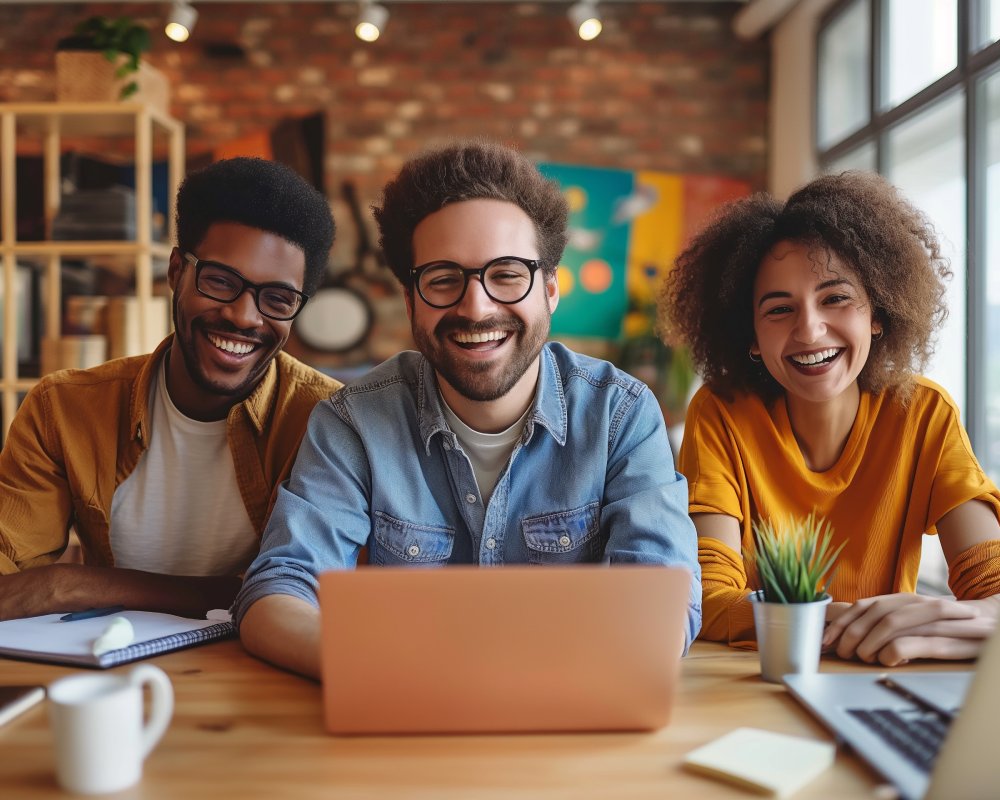
2. Understanding “Gay-Friendly”: What Does It Really Mean?
Before diving into specific destinations, it’s essential to clarify what we mean by a “gay-friendly” or LGBTQ+-friendly city. The phrase itself can be somewhat fluid, as levels of acceptance and inclusivity often fluctuate within neighborhoods, social circles, or even local administrations. However, there are key markers that help define the concept:
- Legal Protections: At a minimum, a city or municipality may have nondiscrimination ordinances in place protecting LGBTQ+ individuals in housing, employment, and public accommodations. Some regions also outlaw hate speech or hate crimes, offering additional legal recourse for victims.
- Health and Community Services: Places with LGBTQ+ community centers, specialized health clinics (particularly those that offer transgender-affirming care), and mental health resources are typically more welcoming.
- Cultural Openness: Another sign of a gay-friendly environment is the presence of cultural events—like Pride festivals, drag shows, film festivals—that are openly celebrated and well-attended by a diverse audience. Museums or galleries that feature LGBTQ+ artists can also indicate a thriving scene.
- Social Attitudes and Visibility: Gay-friendly cities often have visible queer enclaves where individuals can safely socialize. This might manifest as a known gayborhood, LGBTQ-owned businesses, or simply the comfort of holding hands in public without fear.
- Political Representation: Cities that have openly LGBTQ+ elected officials or strongly supportive politicians tend to adopt policies that ensure equality and inclusivity.
It’s important to remember that “gay-friendly” doesn’t mean zero discrimination. Even in the most progressive places, prejudice can linger. Nonetheless, the presence of legal protections, vocal advocacy groups, and socially aware communities typically fosters environments in which LGBTQ+ people can live with relative peace, authenticity, and dignity.
Advertisement · Scroll to continue
Recommended
3. The Importance of LGBTQ+ Inclusivity in Modern Cities
Cities that prioritize inclusivity are better equipped to meet the evolving needs of their populations. For LGBTQ+ residents and travelers, inclusivity translates into everyday realities like:
- Safe Public Spaces: The ability to walk down the street and express your identity without fear of violence or harassment.
- Equal Employment Opportunities: Access to fair hiring processes and workplaces that respect personal pronouns, family structures, and gender presentation.
- Quality Education: Schools where LGBTQ+ students can learn and grow without facing severe bullying or discriminatory policies.
- Healthcare that Respects Individual Identities: Doctors and nurses trained in LGBTQ+ health concerns, mental well-being, and hormone replacement therapies for transgender patients.
Beyond the personal benefits, an inclusive environment also strengthens the local economy. LGBTQ+ tourism is a rapidly growing segment of the travel industry, with visitors often spending more on hospitality and entertainment. Meanwhile, diverse workplaces and inclusive policies attract top talent, fostering innovation in science, technology, business, and the arts.
Cities that embrace these opportunities often find themselves recognized as “Most LGBTQ-Friendly Cities,” reaping rewards in global reputation and social progress. The result is a cultural tapestry in which creative and dynamic communities flourish, from art studios and theaters to tech hubs and activism conferences. In this way, LGBTQ+ inclusivity isn’t just about hosting a Pride festival once a year; it’s woven into the city’s everyday life, legislation, and forward-looking growth strategies.
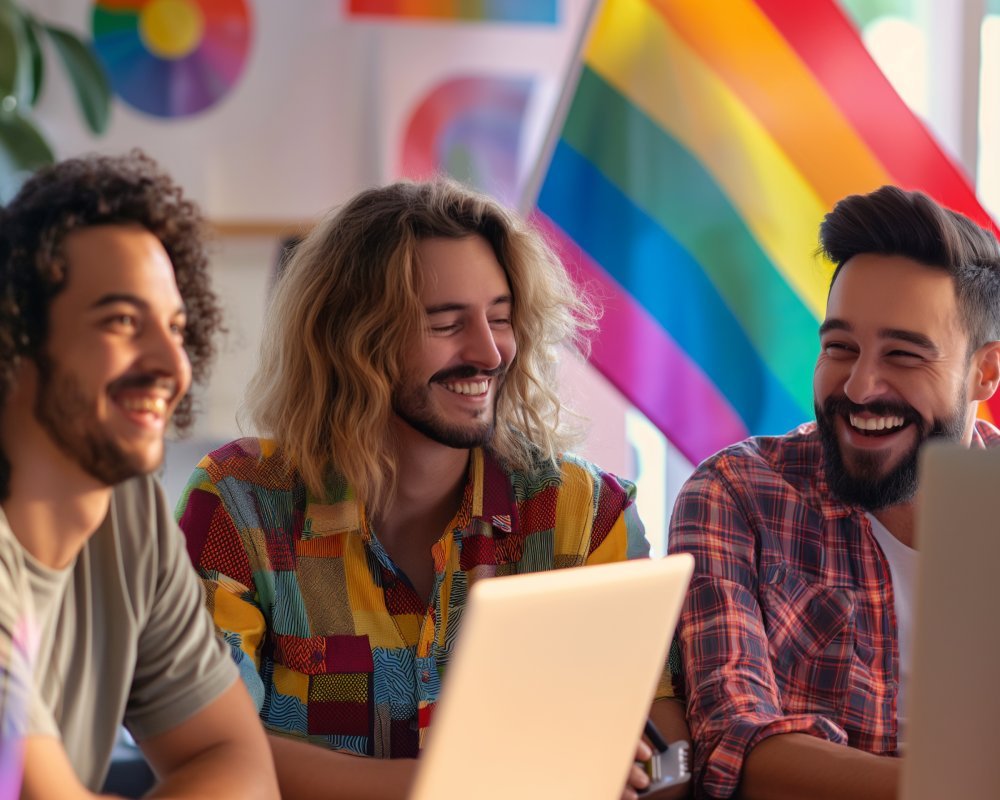
4. 15 Most LGBTQ-Friendly Cities in the U.S.
The United States boasts a wide range of cities known for their progressive attitudes, diverse populations, and established LGBTQ+ communities. In this section, we’ll explore the 15 most LGBTQ-friendly cities in the U.S., considering aspects like legal protections, community resources, cultural attractions, and overall quality of life. While these rankings can shift, these urban hubs have consistently proven to be welcoming places for LGBTQ+ individuals.
4.1 San Francisco, California
Often hailed as the epicenter of American queer culture, San Francisco offers a deep historical legacy anchored in the Castro District. With the nation’s first openly gay elected official, Harvey Milk, and a storied history of activism, the city continues to lead in LGBTQ+ rights. Visitors and residents enjoy a wealth of queer-owned businesses, from bookstores to restaurants, along with landmarks like the GLBT Historical Society Museum. Despite a high cost of living, the city’s progressive governance, robust social services, and cultural diversity make it a top-tier destination.
4.2 New York City, New York
An international capital of finance, fashion, art, and culture, New York City also hosts a legendary queer nightlife and community. From the Stonewall Inn in Greenwich Village—regarded as the birthplace of the modern Pride movement—to diverse enclaves in Brooklyn and Queens, NYC brims with resources for LGBTQ+ people. The annual NYC Pride is one of the world’s largest Pride celebrations, drawing millions of attendees. While the hustle can be intense, the city’s energy and inclusivity often provide a sense of belonging to newcomers and long-term locals alike.
4.3 Los Angeles, California
Situated on the West Coast, Los Angeles beckons with its sun-soaked beaches, entertainment industry glitz, and a bustling LGBTQ+ scene. Neighborhoods like West Hollywood are famous for their gay nightlife, while Silver Lake and Downtown L.A. offer a variety of queer-friendly bars, restaurants, and cultural events. With ample support for creatives and a strong LGBTQ+ celebrity presence, L.A. is both a haven and a global media hub.
4.4 Chicago, Illinois
Chicago’s Boystown—officially recognized as the first “gay neighborhood” in the U.S.—is a center for LGBTQ+ community life. The Windy City’s supportive local government, flourishing arts scene, and Midwestern warmth combine to offer a welcoming environment. Chicago Pride Fest and the Chicago Pride Parade draw hundreds of thousands each year, showcasing a vibrant display of unity and celebration.
4.5 Seattle, Washington
Renowned for its tech giants, coffee culture, and scenic waterfront, Seattle also stands out for its progressive social values. Capitol Hill serves as the city’s hub for LGBTQ+ nightlife and community events. Comprehensive nondiscrimination laws, trans-inclusive healthcare networks, and vocal advocacy groups make Seattle a popular spot for queer professionals, especially those drawn to tech and innovation industries.

4.6 Portland, Oregon
Portland’s famed slogan, “Keep Portland Weird,” aligns with its acceptance of diverse lifestyles. The city’s LGBTQ+ community can be found in vibrant enclaves with craft breweries, arts collectives, and queer-owned boutiques. Pride Northwest sponsors an annual festival and parade, and smaller community events—from LGBTQ+ movie nights to farmers’ markets—keep locals engaged year-round.
4.7 Boston, Massachusetts
With a rich historical heritage and numerous world-class universities, Boston is at the forefront of progressive politics. Same-sex marriage was first legalized in Massachusetts in 2004, setting a precedent for the nation. Neighborhoods like the South End and Jamaica Plain showcase LGBTQ+ businesses, art scenes, and community centers. Boston Pride and related festivals also help maintain a sense of visible, year-round solidarity.
4.8 Washington, D.C.
The nation’s capital is home to a politically savvy LGBTQ+ community. Organizations such as the Human Rights Campaign are headquartered here, influencing national discourse. Neighborhoods like Dupont Circle have historically catered to queer residents, offering bars, cafes, and bookstores. In addition, D.C. boasts strong nondiscrimination ordinances and a host of professional, social, and advocacy networks.
4.9 Atlanta, Georgia
Atlanta is known as the LGBTQ+ capital of the American South. With a rich African American queer community and culturally diverse neighborhoods like Midtown, the city offers robust advocacy groups, an energetic nightlife scene, and a thriving film industry. Atlanta Pride draws crowds from across the region, reflecting a steady push toward inclusion in a part of the country where progress hasn’t always been swift.
4.10 Austin, Texas
A liberal enclave in a predominantly conservative state, Austin champions live music, tech innovation, and progressive social attitudes. The LGBTQ+ community often gathers on 4th Street in Downtown Austin, boasting bars and clubs that proudly display rainbow flags. The city also hosts the Austin LGBT Chamber of Commerce, local film festivals featuring queer voices, and a vibrant Pride scene in late summer.
4.11 Denver, Colorado
Denver has emerged as a growing tech and cultural center, offering an appealing lifestyle to outdoor enthusiasts and city-dwellers alike. LGBTQ+ inclusivity is evident in diverse neighborhoods such as Capitol Hill and RiNo (River North). The Center on Colfax provides resources, while the city’s PrideFest draws over 400,000 attendees each year.
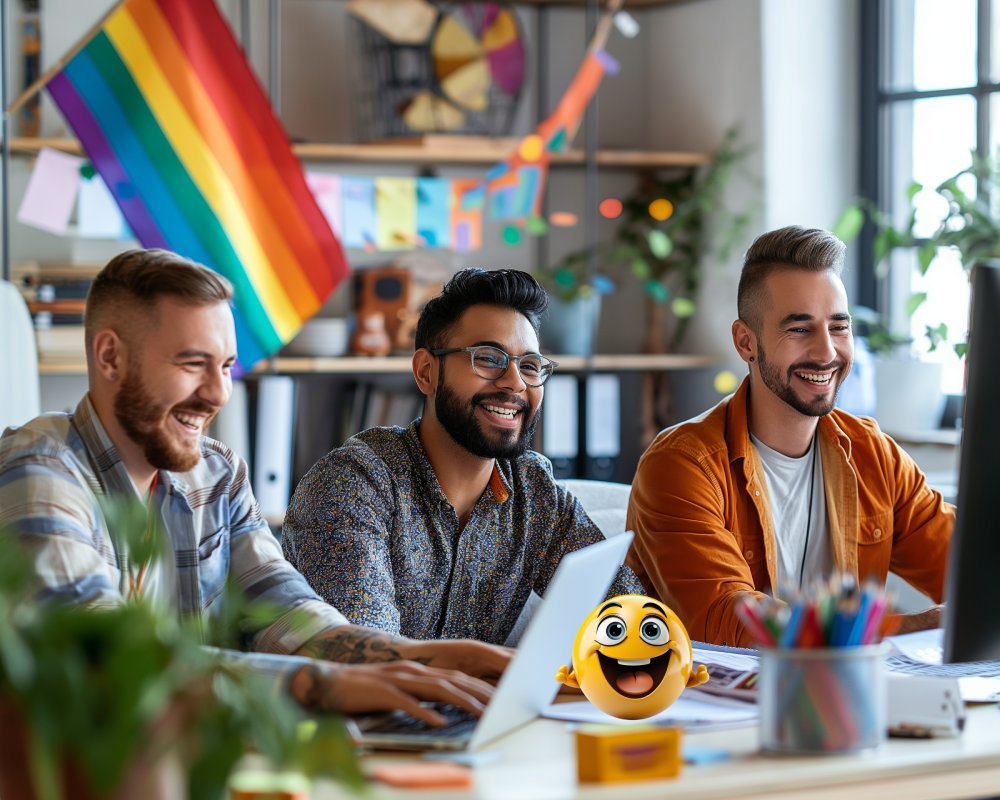
4.12 Minneapolis, Minnesota
Minneapolis consistently ranks high on lists of LGBTQ+-friendly areas thanks to its comprehensive nondiscrimination laws and robust healthcare systems. The city’s annual Twin Cities Pride is a major event, and neighborhoods like Loring Park and Uptown are popular among LGBTQ+ communities. Minnesota’s cold winters are balanced by the warmth of local acceptance and strong civic engagement.
4.13 Philadelphia, Pennsylvania
Philadelphia played a key role in America’s founding, and in more modern times, it’s been a trailblazer in LGBTQ+ rights. The city’s “Gayborhood,” located in Washington Square West, features rainbow street signs and a concentration of queer-owned establishments. Annual events like OutFest, one of the world’s largest Coming Out Day festivals, underscore Philly’s dedication to inclusive gatherings and activism.
4.14 San Diego, California
Located near the Mexican border, San Diego captivates many with its beaches, sunny weather, and laid-back culture. The Hillcrest neighborhood forms the heart of LGBTQ+ life, containing an array of welcoming bars, restaurants, and bookstores. San Diego Pride is among the largest in the U.S., drawing visitors from around the globe.
4.15 New Orleans, Louisiana
Famous for Mardi Gras, jazz, and its multicultural heritage, New Orleans also features a historic LGBTQ+ presence. The French Quarter and Marigny neighborhoods are known for their eclectic nightlife, drag shows, and festivals year-round. Despite some conservative aspects within Louisiana, the city’s open-mindedness and resilience (especially post-Katrina) shine through in its lively and inclusive community.
5. 9 Queer-Friendly American Small Towns You Should Visit
While major metropolises dominate many LGBTQ+ travel lists, smaller towns across the U.S. are increasingly embracing diversity. In fact, the question “Where Are the Gay-Friendly Cities?” often misses the more rural or small-town gems. Let’s shine a spotlight on 9 queer-friendly American small towns you should visit, which offer charm, community, and quieter surroundings:
- Provincetown, Massachusetts
- Why Visit: Often called “P-Town,” this Cape Cod location is one of the country’s most storied LGBTQ+ destinations. Known for its drag shows, art galleries, and stunning coastal views, Provincetown hosts events year-round, from Pride Week to Women’s Week and Bear Week.
- Saugatuck, Michigan
- Why Visit: Situated on the eastern shore of Lake Michigan, Saugatuck is celebrated for its artistic enclaves, bed-and-breakfasts, and vibrant gay resort communities. It’s perfect for summer getaways, with sandy beaches and craft boutiques.
- Eureka Springs, Arkansas
- Why Visit: Despite being in a conservative region, Eureka Springs has passed laws protecting LGBTQ+ individuals and welcomes visitors with cozy lodgings and Victorian-style architecture. The city’s PRIDE diversity weekend and LGBTQ+ events are popular draws.
- Rehoboth Beach, Delaware
- Why Visit: Just a couple of hours from major East Coast cities like Washington, D.C. and Philadelphia, this beach town has a long tradition of welcoming queer visitors. Its boardwalk, beach house rentals, and local dining scene cater to a diverse crowd.
- Guerneville, California
- Why Visit: Tucked within Sonoma County’s redwoods, Guerneville is a relaxed getaway for wine lovers and nature enthusiasts. It’s known as a longstanding LGBTQ+ escape, with popular gay resorts and proximity to some of the region’s best vineyards.
- Asheville, North Carolina
- Why Visit: Known for its bohemian vibe, craft beer culture, and stunning mountain vistas, Asheville also boasts a supportive LGBTQ+ scene. The city’s progressive attitudes are evident in local businesses, art collectives, and community events.
- Galena, Illinois
- Why Visit: With preserved 19th-century buildings and rolling hills, Galena exudes historical charm. While smaller in size, it’s been recognized as an LGBTQ+-friendly escape. Many local inns fly Pride flags year-round and happily serve same-sex couples celebrating anniversaries or weddings.
- Bisbee, Arizona
- Why Visit: This former mining town near the Mexican border has reinvented itself as a laid-back haven for artists, writers, and free spirits. Bisbee Pride offers a robust festival in June, and the city’s Old West vibes make for a unique getaway.
- Hudson, New York
- Why Visit: Just a short train ride from New York City, Hudson blends small-town ambiance with a creative, urban-influenced culture. Antique shops, galleries, and farm-to-table restaurants cater to a diverse crowd. The city has become a magnet for LGBTQ+ New Yorkers seeking respite from big-city life.
These smaller destinations prove that LGBTQ+ inclusivity isn’t confined to major urban centers. They offer a quieter pace, often enriched by scenic backdrops and tight-knit communities. Whether you’re looking for a romantic weekend escape or scoping out a potential new home, these small towns showcase welcoming attitudes and the charm of local life.
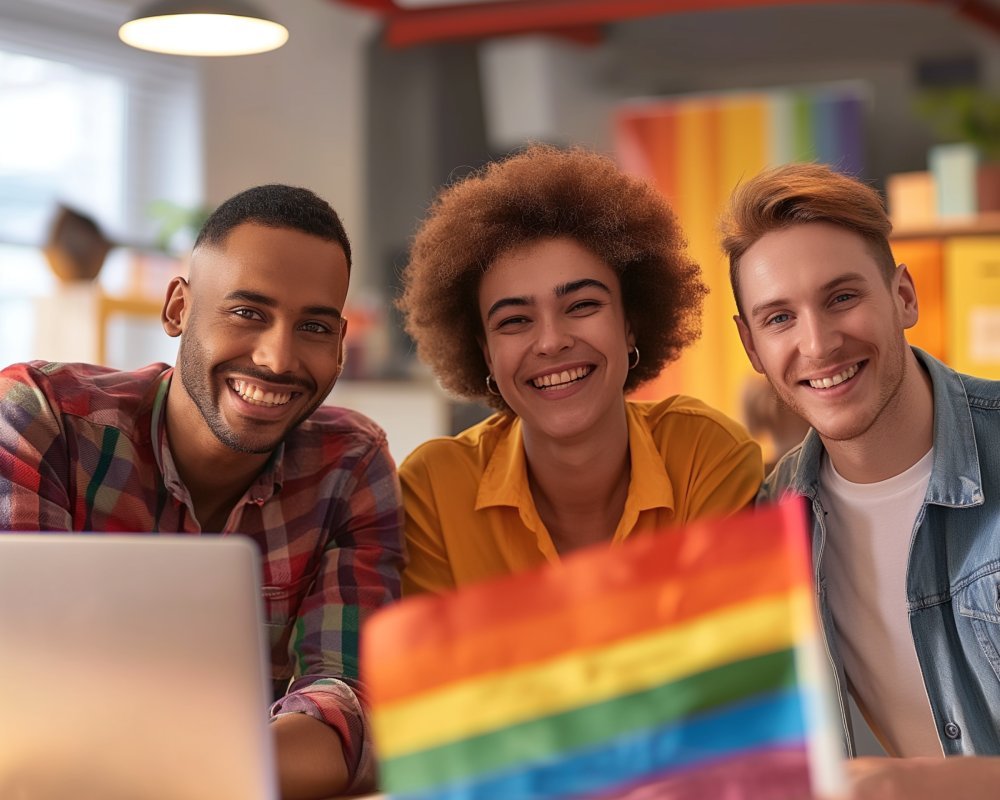
Advertisement · Scroll to continue
Recommended
6. Where Are the Lesbian-Friendly Cities?
While many places that cater to the LGBTQ+ community overall also welcome lesbian residents and travelers, certain cities have developed reputations for especially robust lesbian scenes or resources. If you’re specifically wondering “Where Are The Lesbian-Friendly Cities?” for travel, relocation, or community building, consider these points:
- Dedicated Spaces: Lesbian bars, clubs, or social centers serve as crucial gathering spots. Over the years, the number of lesbian bars in some regions has dwindled, but certain cities still maintain iconic venues.
- Cultural Events: From lesbian film festivals to specialized Pride events, these gatherings create safe, celebratory environments that can help forge lifelong friendships and alliances.
- Support Networks: Community centers that offer support groups for women who love women, single mothers, or older lesbians can be a strong indicator that the city has robust resources.
Top Examples of Lesbian-Friendly Cities
- Portland, Oregon: Known for its alternative culture and inclusive vibe, Portland has hosted a variety of lesbian meetups, cultural events, and entrepreneurial collectives.
- Seattle, Washington: Capitol Hill’s busy nightlife and the city’s progressive stance on women’s issues make it a favored location for lesbian communities.
- New York City, New York: A long history of lesbian activism intersects with numerous bars, cultural centers, and events like Brooklyn Pride.
- Los Angeles, California: L.A. has historically played host to numerous lesbian spaces in Silver Lake and West Hollywood, and organizations like the Los Angeles LGBT Center prioritize women’s programs.
- Chicago, Illinois: Chicago’s vast lesbian social scene includes parties, support networks, and cultural festivals throughout the year.
In international contexts, cities like Berlin, Germany, and Melbourne, Australia, have flourishing lesbian scenes as well. When researching potential destinations, look for local websites, Facebook groups, or Meetup pages dedicated to lesbian events and resources. Reading local publications that cater to women or the broader queer community is another excellent way to discover lesbian-friendly hotspots.
7. Where Are the Transgender-Friendly Cities?
For transgender and non-binary individuals, finding a welcoming city can involve different considerations. Alongside basic legal protections against discrimination, factors like access to specialized healthcare, legal gender recognition processes, and the general openness of social services matter tremendously. Thus, many wonder “Where Are The Transgender-Friendly Cities?” that can provide stability, community, and professional opportunities.
Key Factors for a Transgender-Friendly Location
- Healthcare Facilities: Accessibility to hormone replacement therapy (HRT), gender-affirming surgeries, mental health support, and specialists trained in transgender care.
- Legal Protections: Clear anti-discrimination ordinances that cover gender identity, including housing and employment.
- Community Organizations: Nonprofits or resource centers that offer job training, networking, and legal assistance.
- Social Climate: The ability to live openly as a trans person without fear of harassment or violence. This usually correlates with public awareness campaigns, local activism, and education.

Cities That Often Rank as Trans-Friendly
- San Francisco, California: Pioneering clinics, strong activism history, and a municipal ID system that respects chosen names.
- New York City, New York: Large trans population with multiple health services (Callen-Lorde Community Health Center is widely recognized), supportive local laws, and city-wide awareness initiatives.
- Portland, Oregon: Known for comprehensive healthcare options and a generally open-minded populace, with the Oregon Health Plan providing coverage for trans-specific treatments.
- Seattle, Washington: The Ingersoll Gender Center and other advocacy organizations have made Seattle an increasingly hospitable place for trans individuals.
- Denver, Colorado: With the help of The Center on Colfax, trans residents have access to support groups and educational resources. Additionally, state-wide protections have improved significantly in recent years.
Internationally, cities like Bangkok (Thailand) and Buenos Aires (Argentina) have become notable for transgender healthcare and legal frameworks, respectively. Each city’s offerings differ, so doing meticulous research—especially connecting with local trans advocacy groups—can help determine the best fit.
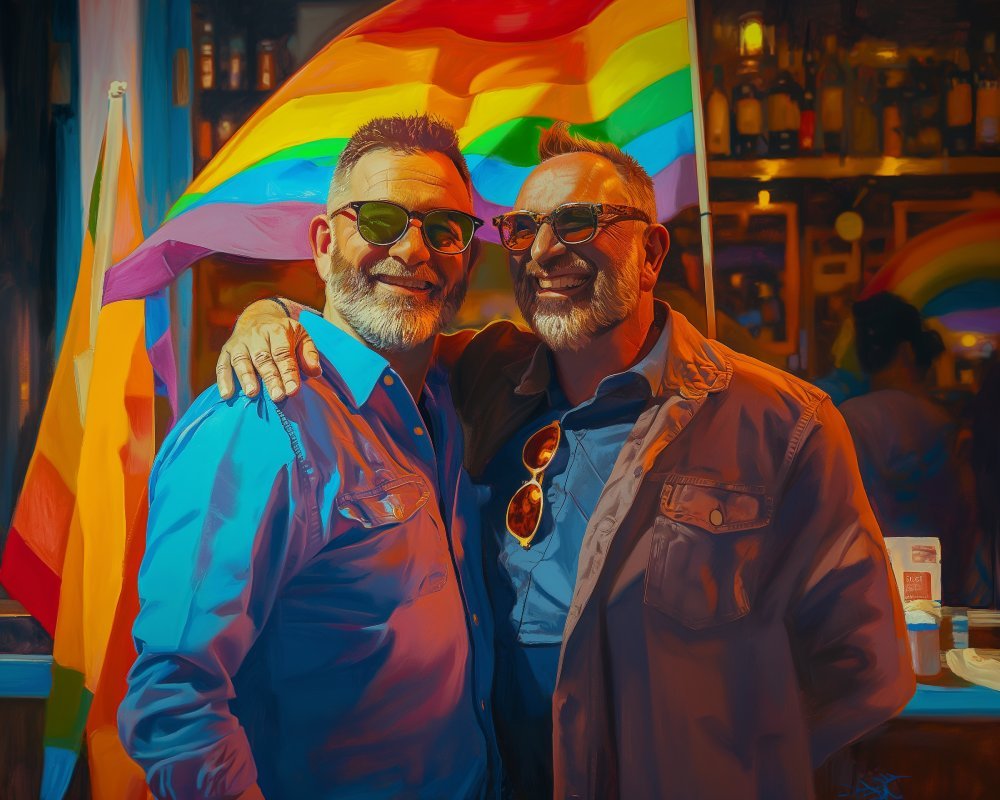
8. 16 Most LGBTIQ+-Friendly Cities in the World
Now let’s broaden our scope beyond the United States to spotlight the 16 most LGBTIQ+-friendly cities in the world. Each entry below is distinguished by active local LGBTQ+ communities, progressive legislation, and vibrant cultural or nightlife scenes.
1. Amsterdam, Netherlands
- Why: A pioneer in legalizing same-sex marriage (2001), Amsterdam fosters a laid-back and accepting culture. Its annual Canal Pride is iconic, and LGBTQ+ bars abound in neighborhoods like Reguliersdwarsstraat.
2. Toronto, Canada
- Why: Canada’s largest city hosts one of North America’s biggest Pride festivals. The Church and Wellesley neighborhood is the epicenter for LGBTQ+ life, bolstered by strong anti-discrimination laws nationwide.
3. Berlin, Germany
- Why: Known for its edgy nightlife, free-spirited culture, and long queer history dating back to the Weimar era, Berlin resonates with LGBTQ+ travelers. Districts like Schöneberg have a dense concentration of queer bars and events.
4. Madrid, Spain
- Why: Home to one of the world’s largest Pride celebrations in the Chueca neighborhood, Madrid pairs Spanish passion with progressive social attitudes. Spain’s laws around same-sex marriage and adoption have been in place since 2005.
5. Sydney, Australia
- Why: Each year, Mardi Gras transforms Sydney into a rainbow spectacle, attracting visitors worldwide. Oxford Street is famed for clubs and bars, and Australia’s legalization of same-sex marriage in 2017 reinforced the city’s open-minded culture.
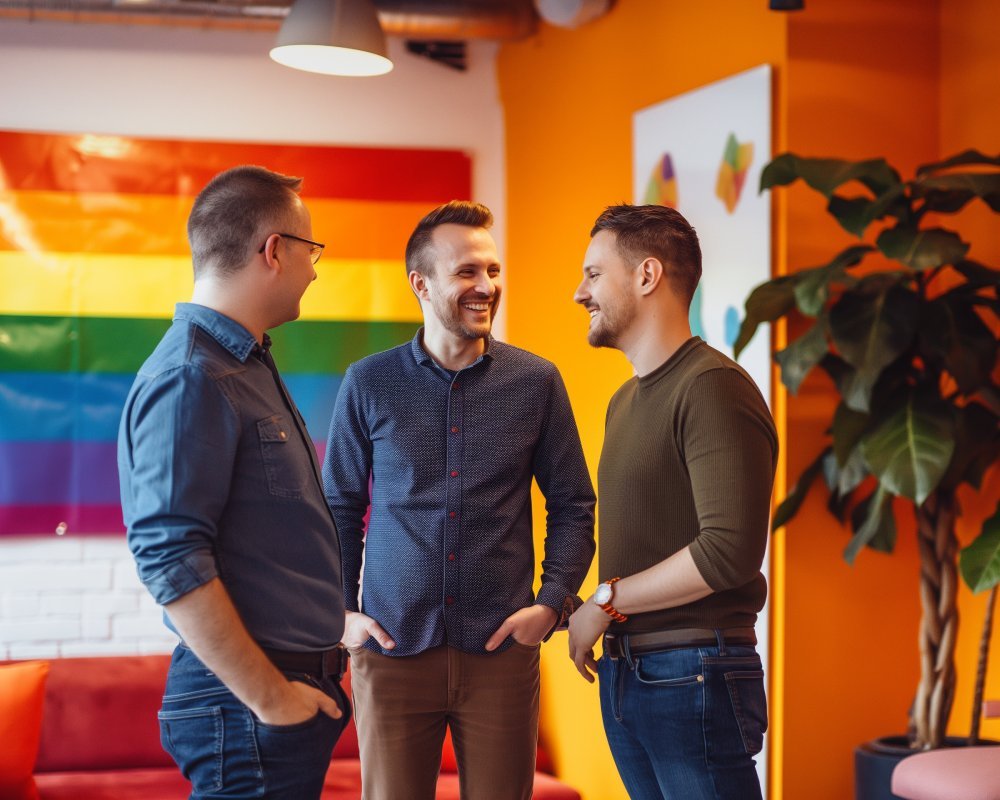
6. São Paulo, Brazil
- Why: The São Paulo Pride Parade is among the largest globally, reflecting an extensive network of LGBTQ+ activism. Although Brazil faces challenges with homophobia, the city center remains a beacon for queer nightlife and social movements.
7. Tel Aviv, Israel
- Why: Tel Aviv’s Pride draws large international crowds, set against the city’s stunning beachfront. Despite regional complexities, the city is known for its liberal attitudes, tech-savvy youth culture, and strong gay nightlife.
8. London, United Kingdom
- Why: A multicultural powerhouse, London has numerous LGBTQ+ scenes—from the chic clubs in Soho to alternative gatherings in East London. Comprehensive equality laws and a storied queer history (think Oscar Wilde) make it a magnet for LGBTQ+ residents.
9. Copenhagen, Denmark
- Why: Denmark was the first country to legally recognize same-sex partnerships in 1989. Copenhagen’s laid-back vibe, safe streets, and annual Pride create a welcoming environment, complemented by strong welfare policies.
10. Reykjavik, Iceland
- Why: This small capital city is huge on inclusivity, with laws that protect gender expression and sexual orientation. Iceland’s Pride celebrations, friendly residents, and breathtaking natural landscapes make for an appealing destination.
11. Paris, France
- Why: Often associated with romance, Paris extends its charm to the LGBTQ+ community. Le Marais is a historical gay district filled with bars, cafes, and galleries. France’s 2013 legalization of same-sex marriage solidified its status.
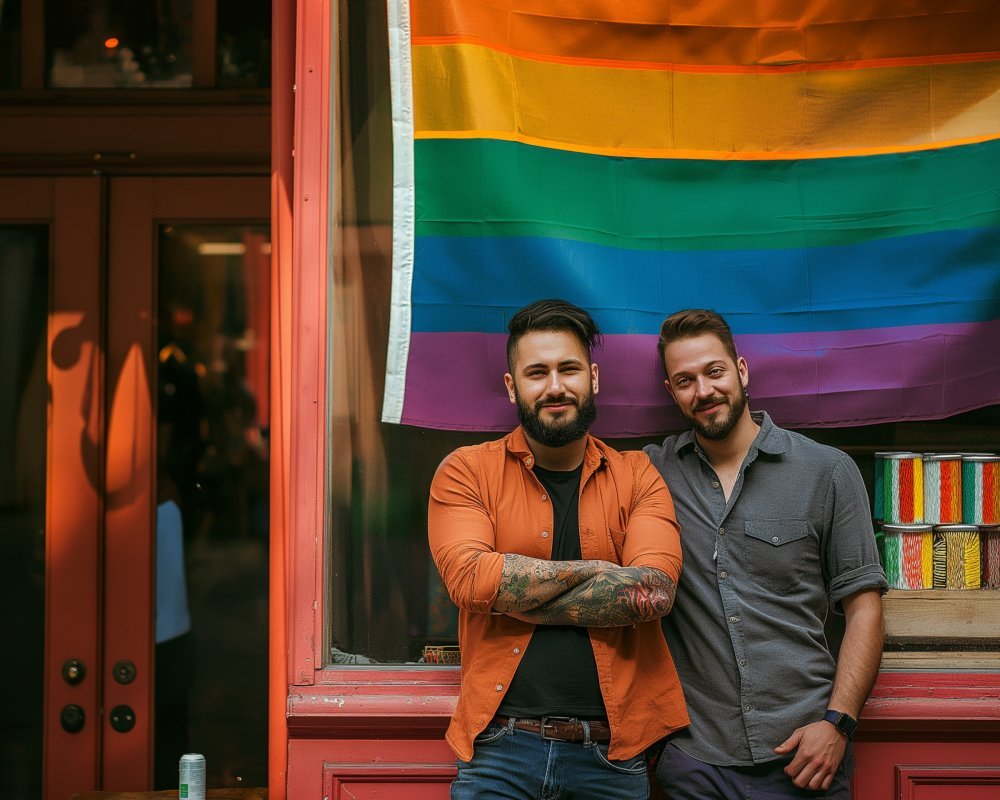
12. Bangkok, Thailand
- Why: Southeast Asia’s most visited city welcomes LGBTQ+ tourists with a lively nightlife scene in Silom and diverse cultural experiences. Gender reassignment surgery and specialized healthcare are also well-established, drawing international patients.
13. Cape Town, South Africa
- Why: As the first African country to legalize same-sex marriage, South Africa’s progressive stance is most visible in cosmopolitan Cape Town. The De Waterkant neighborhood brims with LGBTQ+ venues, and the city’s natural beauty adds to its appeal.
14. Buenos Aires, Argentina
- Why: Argentina pioneered some of the most comprehensive trans rights worldwide and legalized same-sex marriage in 2010. Buenos Aires’ tango halls, nightclubs, and cultural institutions reflect a passionate commitment to LGBTQ+ inclusion.
15. Stockholm, Sweden
- Why: Known for high standards of living and liberal social policies, Stockholm hosts a Pride that extends into the city’s museums, parks, and performing arts centers. Sweden’s robust welfare state and acceptance of LGBTQ+ identities attract residents from around the globe.
16. Taipei, Taiwan
- Why: Taiwan was the first country in Asia to legalize same-sex marriage (2019). Taipei Pride has become a significant regional event, celebrating newfound freedoms. Despite persistent cultural hurdles, the city’s dynamic environment makes it a compelling destination.
These global cities demonstrate that LGBTQ+ acceptance can be found on every continent, offering distinct cultural flavors and varying degrees of legal protections. From Berlin’s techno scene to Bangkok’s street markets, each location promises a tapestry of queer life that enriches both visitors and residents.
9. The LGBTQ Guide to the United States
While we’ve covered the 15 most LGBTQ-friendly cities in the U.S. as well as some lesser-known gems, a more holistic look at the country reveals how multifaceted the scene truly is. The “LGBTQ Guide to the United States” encompasses:
- Regional Differences: Coastal areas, especially the West Coast and Northeast, generally exhibit more progressive policies, though enclaves in the South, Midwest, and Mountain West increasingly champion LGBTQ+ rights.
- Historical Centers of Activism: Cities like New York, San Francisco, and Los Angeles carry legacies that shaped global queer rights movements.
- College Towns: University-driven communities—such as Ann Arbor, Michigan, or Bloomington, Indiana—often stand out as pockets of acceptance in otherwise conservative states.
- Suburban Progress: Gradually, suburban enclaves around major metros like Chicago, Dallas, or Atlanta are becoming more inclusive, reflecting demographic changes and a younger, more progressive generation.
Navigating the U.S. as an LGBTQ+ individual or couple can be easier in cities that have robust community structures and nondiscrimination ordinances. That said, even some conservative states have progressive localities, so research is key. The American Civil Liberties Union (ACLU) website or local LGBTQ+ centers can offer up-to-date information on state-level policies, ensuring that travelers and residents alike can find supportive spaces.

10. Cultural and Social Factors Shaping LGBTQ+ Acceptance
Understanding “Where Are the Gay-Friendly Cities?” involves more than enumerating Pride events or discrimination laws. Cultural and social factors—including religious traditions, media representation, and community-led advocacy—strongly shape acceptance levels.
- Religious Influence: In areas where conservative religious groups hold sway, LGBTQ+ communities may face obstacles. However, progressive faith organizations often counterbalance opposition, providing safe havens and support structures.
- Media Representation: Positive portrayals of LGBTQ+ people in films, music, and television can transform public perception. Cities with strong creative industries, like Los Angeles and Berlin, often produce more inclusive media that trickles down to broader society.
- Educational Efforts: School programs, university courses, and workshops geared toward LGBTQ+ sensitivity training significantly influence local attitudes, fostering acceptance among younger generations.
- Intersectionality: The experiences of queer people of color, disabled queer individuals, or transgender refugees can differ markedly even within gay-friendly locales. Intersectional advocacy ensures that progress benefits all subgroups within the LGBTQ+ spectrum.
- Grassroots Activism: Many inclusive cities owe their reputations to tireless efforts by local activists, nonprofits, and community leaders who lobby for protections, create support networks, and host cultural programs.
Cities that integrate these social and cultural factors into policy-making and public life generally see stronger, more cohesive LGBTQ+ communities. However, acceptance is a moving target, and consistent community engagement is essential to maintain an environment of openness and respect.
11. Navigating Local Laws, Protections, and Community Resources
For LGBTQ+ travelers or those considering a move, legal protections and available resources are top concerns. Even in countries with national-level equality legislation, local provisions can vary widely. Below are tips to help you navigate these complexities:
- Research Before You Go: Look into whether the local jurisdiction recognizes same-sex marriages or civil unions, outlaws discrimination in housing and employment, and enforces hate crime laws.
- Connect with Local LGBTQ+ Centers: Community centers can provide information on safe neighborhoods, recommended healthcare providers, and upcoming events. They often serve as gateways to socializing and networking.
- Online Forums and Social Media: Platforms such as Facebook groups, Reddit threads, or dedicated travel sites (like Travel Gay) let you crowdsource experiences from people who live there or have visited recently.
- Legal Name and Gender Changes: For transgender individuals, the process for updating identity documents can differ drastically from one municipality to another, even within the same country. Official government websites can clarify relevant protocols.
- Healthcare Systems: Seek out local clinics experienced in LGBTQ+ health issues. If you take hormones or require specialized care, confirm providers in advance. In many cities, nonprofits step in where public healthcare systems fail, so find out who the local community trusts.
Staying informed mitigates risk and uncertainty, ensuring you can explore or relocate with greater peace of mind. If you encounter discrimination, organizations like the Human Rights Campaign, ILGA (International Lesbian, Gay, Bisexual, Trans and Intersex Association), or local legal aid societies may be able to offer help.
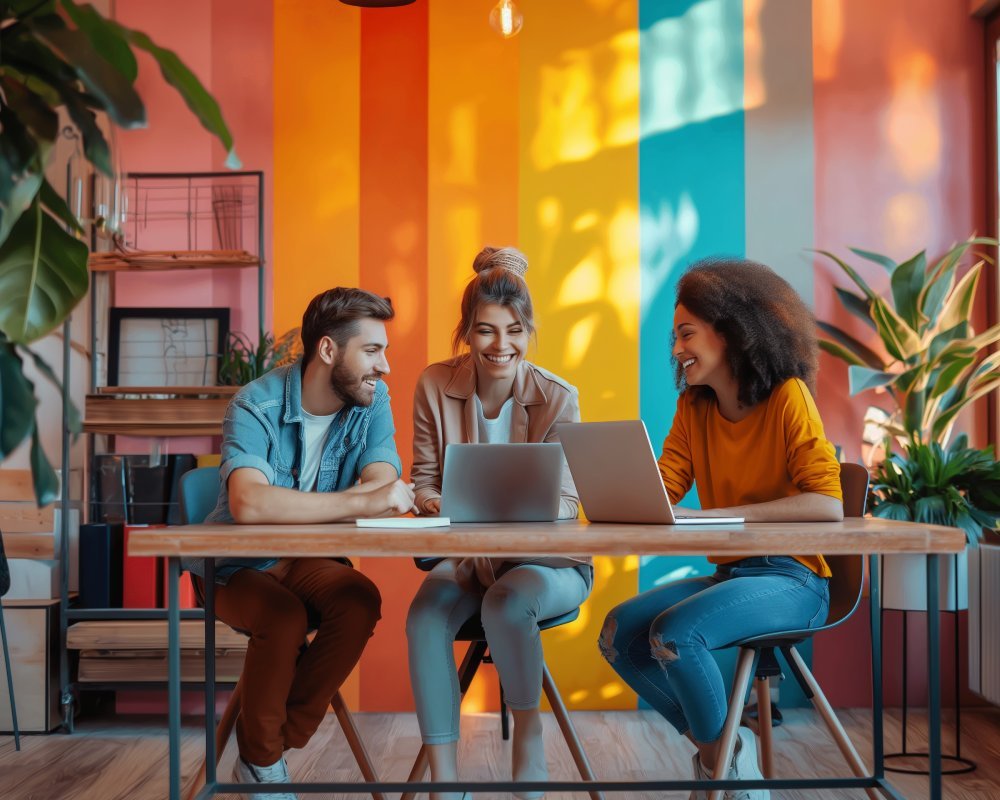
12. Comparing Cost of Living and Quality of Life
LGBTQ+ acceptance is a key factor in choosing a new city or travel destination, but practical considerations—particularly the cost of living—cannot be overlooked. Not every “gay-friendly” city is easy on the wallet. Here’s how to weigh these factors:
- Housing Prices: In places like San Francisco, New York, and London, housing costs can be astronomical. Suburbs or neighboring towns might offer more affordable living while still granting access to an inclusive urban center.
- Job Markets: Cities with thriving industries—tech, healthcare, entertainment—can provide stable employment. However, competition for jobs in popular gay-friendly destinations can be fierce.
- Healthcare and Insurance: In nations with universal healthcare, cost-of-living calculations might differ significantly from those in countries where health insurance is privatized. Transgender individuals should verify if local healthcare plans cover gender-affirming treatments.
- Social Life: Large metropolitan areas often feature extensive nightlife, cultural festivals, and numerous LGBTQ+ interest groups, but they may require higher budgets to enjoy. Smaller communities might offer a closer-knit scene at a fraction of the cost.
- Public Transportation: Efficient transit systems can offset housing expenses if you can live further from city centers. Places like Berlin, Chicago, and Taipei often rank high in quality of life studies partly due to well-developed public transport.
Researching a city’s average salaries alongside housing, taxes, and daily expenses helps determine if an inclusive environment is also financially viable. Remember that “affordability” differs by individual circumstance—students, retirees, and professionals all have unique needs.
13. Travel Tips for LGBTQ+ Voyagers
Whether jet-setting to the 16 most LGBTIQ+-friendly cities in the world or exploring domestic frontiers like the 15 most LGBTQ-friendly cities in the U.S., a bit of preparation goes a long way:
- Check Travel Advisories: Government websites sometimes warn travelers of potential risks in specific regions, including issues faced by LGBTQ+ tourists. Always read the latest advisories for your destination.
- Use LGBTQ+-Friendly Booking Platforms: Services like misterb&b and Purple Roofs list accommodations that welcome queer travelers. This can help circumvent uncomfortable situations at check-in.
- Know the Cultural Norms: Even in accepting countries, public displays of affection might be viewed differently. Understanding local customs can prevent misunderstandings or safety issues.
- Stay Connected: Apps like Grindr, HER, or Lex are not only for dating but also for meeting locals who can offer insights or show you around. Just remember to use them wisely and prioritize personal safety.
- Pride and Festival Schedules: Timing your trip to coincide with a Pride celebration or LGBTQ+ festival can significantly enhance the experience. It’s a unique opportunity to see a city in full celebratory bloom, meet new friends, and learn about the local queer community.
While traveling, remain attentive to your surroundings and trust your instincts. If a situation feels unsafe, seek assistance. By staying informed, you can explore the world with confidence and cultivate meaningful cross-cultural connections.

14. LGBTQ+ Nightlife and Cultural Scenes Around the Globe
One of the joys of discovering gay-friendly cities is the array of nightlife, arts, and culture available. From intimate speakeasies to grand opera houses, the ways in which LGBTQ+ communities celebrate identity vary tremendously:
- Nightclubs and Bars: In cities like New York, Berlin, and Bangkok, clubs are a staple of queer culture. Whether you love techno raves or drag cabarets, you’ll likely find a venue that suits your style.
- Performing Arts: Theater and live performances play a significant role in cities with historical ties to queer artists—think Weimar-era Berlin or Broadway in New York. Check local listings for queer-themed productions or all-LGBTQ+ casts.
- Film Festivals: Many urban areas host LGBTQ+ film festivals throughout the year, spotlighting international cinema that tackles themes from coming-of-age stories to hard-hitting documentaries.
- Art Exhibits and Museums: Dedicated spaces like the Leslie-Lohman Museum of Art in New York, or traveling exhibits focused on LGBTQ+ history, lend depth to our understanding of queer struggles and triumphs.
- Local Traditions and Fusion: In some cultures, drag might blend with traditional folk music or local street theater, creating a fusion that’s uniquely reflective of regional identity.
If nightlife isn’t your cup of tea, daytime events like brunch meetups, guided community tours, or volunteer opportunities can also provide ample ways to connect with LGBTQ+ locals and learn about social dynamics in the region.
15. The Role of Pride Events and Local Activism
Pride parades and festivals have become hallmark celebrations in major LGBTQ+-friendly cities, and increasingly, in smaller towns worldwide. These events do much more than paint the streets rainbow for a weekend:
- Visibility and Solidarity: Pride fosters a sense of community by bringing together individuals who might otherwise feel isolated. The festivals invite straight allies, families, and local businesses to stand in support, affirming that LGBTQ+ people belong at the heart of civic life.
- Economic Boost: Pride events can significantly benefit local economies—hotels fill up, restaurants see additional patronage, and shops thrive on the influx of tourists.
- Political Implications: Many Pride celebrations feature speeches by activists, politicians, or community leaders. They’re opportunities to push for legislative reforms and create awareness about ongoing social issues like trans rights, conversion therapy bans, or healthcare inequalities.
- Cultural Preservation: Parades, exhibits, and related events often highlight local LGBTQ+ history. This includes honoring past struggles and achievements, such as the Compton’s Cafeteria Riot in San Francisco or the “Lavender Scare” in Washington, D.C.
In regions where open celebration is dangerous, smaller community gatherings or “underground” Pride events can still serve as critical points of unity and activism. The courage displayed by organizers in these contexts helps pave the way for future generations to celebrate more freely.

16. Conclusion: Embracing a More Inclusive Global Future
Answering the question, “Where Are the Gay-Friendly Cities?” reveals a continuously evolving global mosaic of acceptance, legal reforms, and grassroots activism. From the 15 most LGBTQ-friendly cities in the U.S. to the 16 most LGBTIQ+-friendly cities in the world, we’ve seen that openness can flourish anywhere—coastal metropolises, inland college towns, charming beachside retreats, or bustling global capitals.
On a more granular level, this journey also explores specifics like “Where Are The Lesbian-Friendly Cities?” and “Where Are The Transgender-Friendly Cities?” acknowledging that each subgroup within the LGBTQ+ umbrella has unique needs. That’s why it’s critical to investigate legal protections, healthcare access, social networks, and cultural expressions at the local level. The existence of a strong Pride parade or a famed nightlife might captivate some, but for many others, it’s everyday living conditions—ranging from job security to respectful healthcare—that truly define inclusivity.
The good news is that many cities and towns worldwide are stepping up to ensure all LGBTQ+ individuals can thrive. Whether you’re traveling to a global hub like Berlin or relocating to a small town like Saugatuck, Michigan, the sense of community and shared identity can be an affirming anchor. Of course, challenges remain, especially in regions with entrenched prejudice or inadequate legal frameworks. Yet the collective momentum, driven by activists, organizations, and supportive local governments, continues to push the boundaries of what’s possible.
Finally, being an informed traveler or prospective resident makes a world of difference. By researching legal rights, local queer scenes, cost of living, and intersectional dynamics, you can find a city (or small town) that aligns with your values, interests, and needs. Engaging with community groups—whether online or on the ground—ensures you’ll build networks quickly and responsibly. And as each person contributes their unique energy to these LGBTQ-friendly places, they, in turn, grow stronger, more vibrant, and more inclusive.
So, whether you’re inspired to wander the cobblestone streets of Copenhagen, attend a drag brunch in Portland, or soak up the sun in Tel Aviv, remember that each journey not only broadens your own horizons but also fortifies the global tapestry of acceptance and celebration. In an ideal future, the question “Where are the gay-friendly cities?” might become obsolete—as inclusivity spreads to every corner of the world—but until then, may this guide help you chart your path toward belonging and discovery. Safe travels, and embrace all the colors our world has to offer!
Advertisement · Scroll to continue

More Recommended
LGBT Rights
LGBT Rights: A Comprehensive Exploration of Progress, Challenges, and the Global Landscape 1. LGBT Rights [...]
What does lambda mean in LGBT?
What does lambda mean in LGBT? – The question “What does lambda mean in LGBT?” [...]
Breaking Stereotypes: How Brands are Diversifying their Advertising to Include Lesbians
Breaking Stereotypes: How Brands are Diversifying their Advertising to Include Lesbians In recent years, there [...]
How Lesbian Advertising Challenges Traditional Marketing Strategies
How Lesbian Advertising Challenges Traditional Marketing Strategies As the world becomes increasingly diverse and inclusive, [...]
Pride and Profit: How Brands are Embracing LGBTQ+ Marketing to Drive Sales
Pride and Profit: How Brands are Embracing LGBTQ+ Marketing to Drive Sales – At Gay [...]
San Francisco LGBTQ+ Guide: What to Do & See
San Francisco LGBTQ+ Guide: What to Do & See – San Francisco is a vibrant [...]
Is It Okay for Gay Teachers to Come Out?
Is It Okay for Gay Teachers to Come Out? – Coming out as gay or [...]
Can Lesbian Cruises Help You Disconnect and Reconnect?
Can Lesbian Cruises Help You Disconnect and Reconnect? If you are a member of the [...]
The History of Gay Rights Movements Around the World
The History of Gay Rights Movements Around the World – The history of gay rights [...]